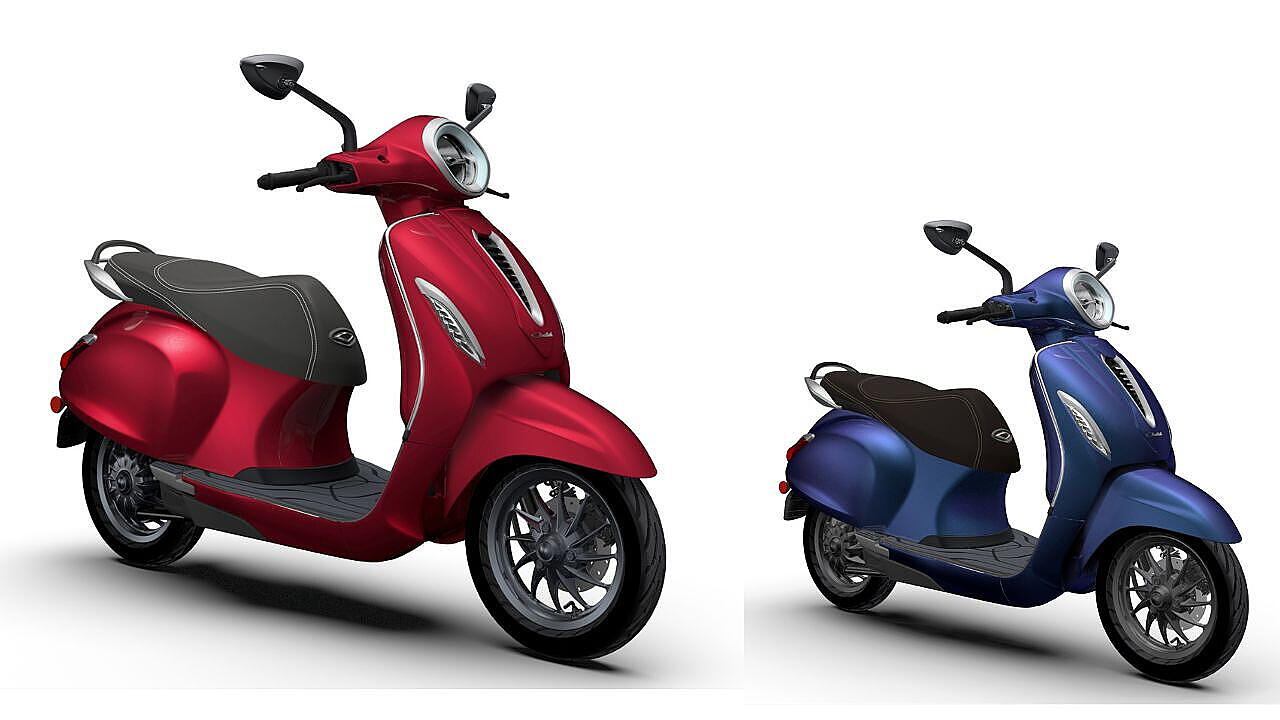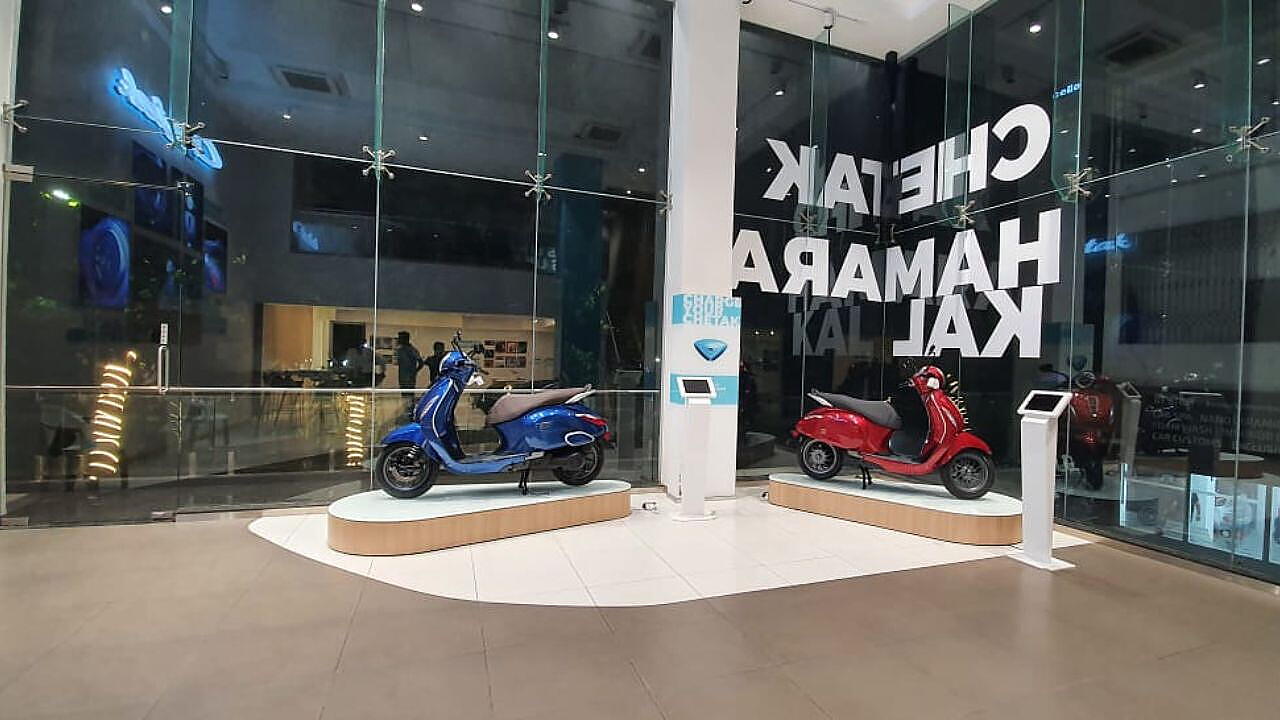
Bajaj Auto is eying a brisk growth story for the Chetak with critical building blocks now in place. If everything goes according to plan, monthly production numbers of the electric scooter could be in the region of 10,000 units next fiscal.
“The electric story is a big global story, especially at the two-wheeler end, which is seeing interest and appeals to certain sets of customers worldwide. There have been enquiries and a part of our production will be sold overseas next year,” Eric Vas, President, Urbanite Business, Bajaj Auto, told Mobility Outlook.
The confidence also stems from the fact that Bajaj has got critical infrastructure in place, both at the front and back end, which will pave the way for generating more volumes for Chetak. It has already kicked off the process of opening separate showrooms and workshops as part of an exercise to give the brand greater exclusivity.
When the Chetak journey started in 2020, the company retailed the scooter from select KTM outlets, which also catered to servicing needs in its workshops. There was just one dedicated Chetak outlet in Pune, which was actually an experience centre that did not sell scooters.
Gauging Customer Feedback
The idea of setting it up then was to experiment with new ways of retailing and gauging customer feedback. “The Pune outlet was a lab for us to test stuff like paperless work. It was staffed by our people and we wanted to learn and understand the market,” says Vas.
Things have clearly changed since then. “We realised that we needed a proper brand presence with Chetak showrooms and separate workshops,” he continues. According to him, Bajaj is the only OEM in the electric vehicle (EV) space, which has prioritised service over sales.
“In EVs, the technology is unfamiliar to the technician and, hence, the need for exclusive workshops,” says Vas. Consumers may accept technology in the case of a cell phone, for instance, which needs less maintenance than the traditional “good old dial phone” of yesteryear.
In the automotive space, however, the equation of reliability and maintenance is not the same as the white goods and mobile phone categories. “We have the reality of bad roads, accidents, brakes and suspensions etc to deal with,” he adds.

Mind-set Change
A transportation vehicle is “very much a mechanical device still” though the powertrain has become electrical and electronic. If “we want to successfully repair” vehicles, the culture of repair has to change completely. Although it is a mechanical device, the expertise required to fix an EV is different from its internal combustion engine (ICE) sibling.
“The reason is one of mind-set because in an ICE space, it is one of pistons, looking at things not fitting properly, of vernier calipers, measuring dimensions and so on. In an EV, the mind-set is knowing the wiring harness, measuring currents which are in milliamps and microamps, measuring voltages and then diagnosing what is wrong to fix it,” explains Vas.
By the end of the day, it is a different mind-set and Bajaj figured out that it was difficult to fit the same cultures into one workspace. With ICE being the dominant mind-set in organisations, the company thought it was best to have the workshop area separated.
“It is an expertise issue on the service side and not easy to do in a mechanical workshop dominated by ICE,” he says. Chetak customers can now see how their scooters are being repaired in workshops, which are very clean with no sound or smoke within the ecosystem.
Likewise, at the retail end, the company was more than aware that the showroom is the prime interface for someone looking to buy an electric scooter. Today, there are exclusive Chetak outlets in Bengaluru, Hyderabad, Chennai, Navi Mumbai, Ahmedabad, Visakhapatnam and Kolkata.
Why Optics Matter
With more products coming in under the Chetak umbrella (beyond the present single offering), there will be “more stuff to display”, which would not have been possible in KTM outlets. “Starting in a KTM showroom was good for Chetak but KTM itself has many products already with more coming, which means you are jostling for space in this showroom,” says Vas.
Two, as the EV industry grows and gains scale, optics clearly matter and it is important to “position yourself” correctly in front of the customer. The brand optic requires a properly branded showroom for Chetak to represent the message — not just for the current, but future products too.
By the end of this fiscal, Bajaj hopes to have approximately 60 exclusive showrooms across the country with another 100 to be added during 2023-24. “We will monitor sales to open more showrooms and expansions will depend on monthly numbers reaching 10,000 units,” says Vas.
Some of these outlets owned by the company and operated by dealers are about 3,000 sq ft, while dealer-owned showrooms will be smaller at around 1,200 sq ft.
“This will allow us to have a fixed template across the country. The best bet is to have sizes more or less fixed and if volumes are large, you should aim to duplicate and go in for greater density. Dealers can have reasonably-sized outlets of high quality,” he explains.
Single Product Limitation
The goal is to have the Chetak brand at the premium end of every segment and also to be “fairly technology-intense” while putting a lot of focus on customer experience as part of the selling proposition. Monthly sales are still in the range of 3,000-odd units, which is also largely owing to the fact that there is only a single product on offer unlike rival models in the electric scooter space.
“When a customer comes to the showroom and takes a test ride, he may not like the price and the salesperson can offer him the less expensive option. We do not have that luxury and this is a constraint since conversions will be lower than competition. Price matters in a country like India,” admits Vas.
Despite this, the company is not overly concerned because “we know our constraints as well as the mix of the other guys who are selling”. With more affordable options now due to come in, Bajaj is hopeful of higher numbers in the coming months even though “right now, it would seem that we are not doing as well as rivals”.
Higher price points for the Chetak are also likely since there are customers both here and overseas, who will be looking for more features. What defines a premium product is “left to the imagination” of designers and manufacturers. There are some countries where added specifications necessitate higher price tags and these Chetak versions can be sold in India too, where some customers will value these add-ons.
Rapidly Evolving Behaviour
Market feedback suggests that buyers like the metal body concept and styling but “what they don't interpret the way we would have liked them to” is the way the connected vehicle technology works. People want a touchscreen with maps and navigation beyond the LED display.
This is a market that is “evolving rapidly” and customers see an EV as a device driven by cellphone experience. This perception, therefore, has implications in the way they make decisions and “our concern is that if this is a durable thought platform” or merely a passing phase.

It is difficult to figure that out even while the priority is to deliver what customers want. The touchscreen, for instance, is a “problematic issue” since it is prone to damage/abuse unlike a car where the stuff is enclosed inside. Yet, adds Vas, this is “not an unreasonable request and we will see what can be done”.
Shifting The Narrative
Thus far, Gujarat, Maharashtra, coastal Karnataka and Kerala are the buoyant markets for Chetak whose buyers are in the 27-45 age group. “We also have women buyers and would like more to join the family,” he adds. Some remain wary, though, of the scooter’s weight thanks to the metal component.
According to Vas, customers seek features on an EV more than anything else though this narrative will begin shifting once the ownership experience cycle sets in. It is here that Bajaj is confident that a Chetak which has traversed over 40,000 km will score over competition in terms of service track record and the state of health of the battery.
“In my view, the EV game is one which will need 5-6 years to establish a position and for customers to understand that Chetak has a certain value. It cannot be judged on current sales,” he signs off.
Also Read:
Bajaj Auto Launches Pulsar P150 Built On NextGen Platform